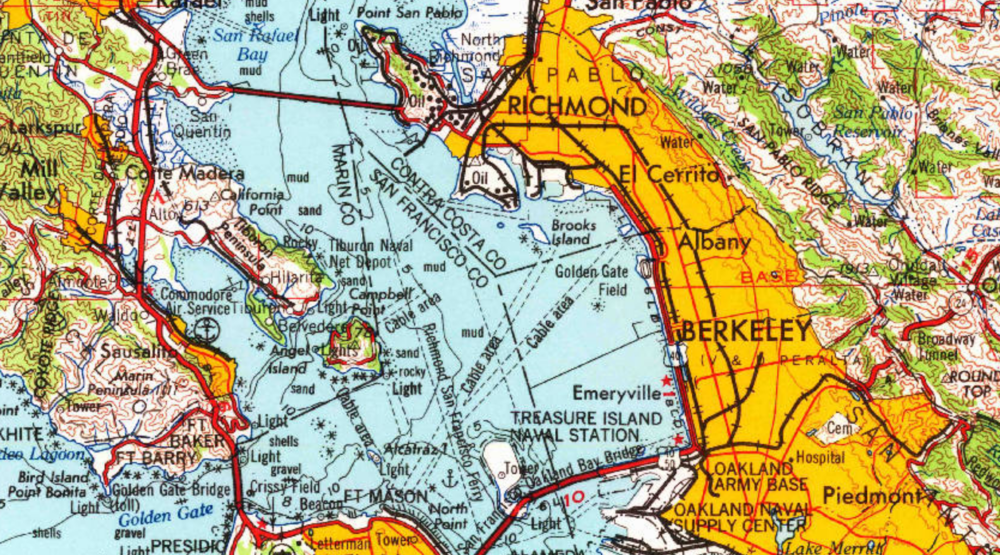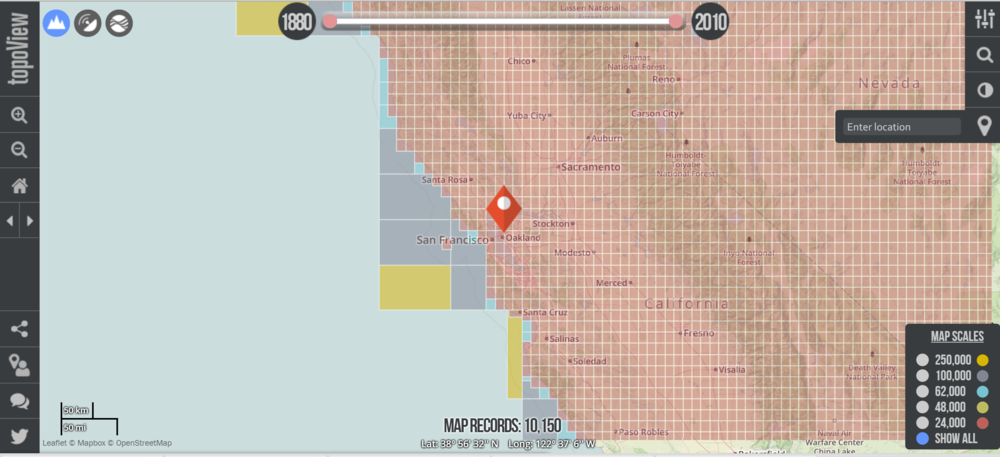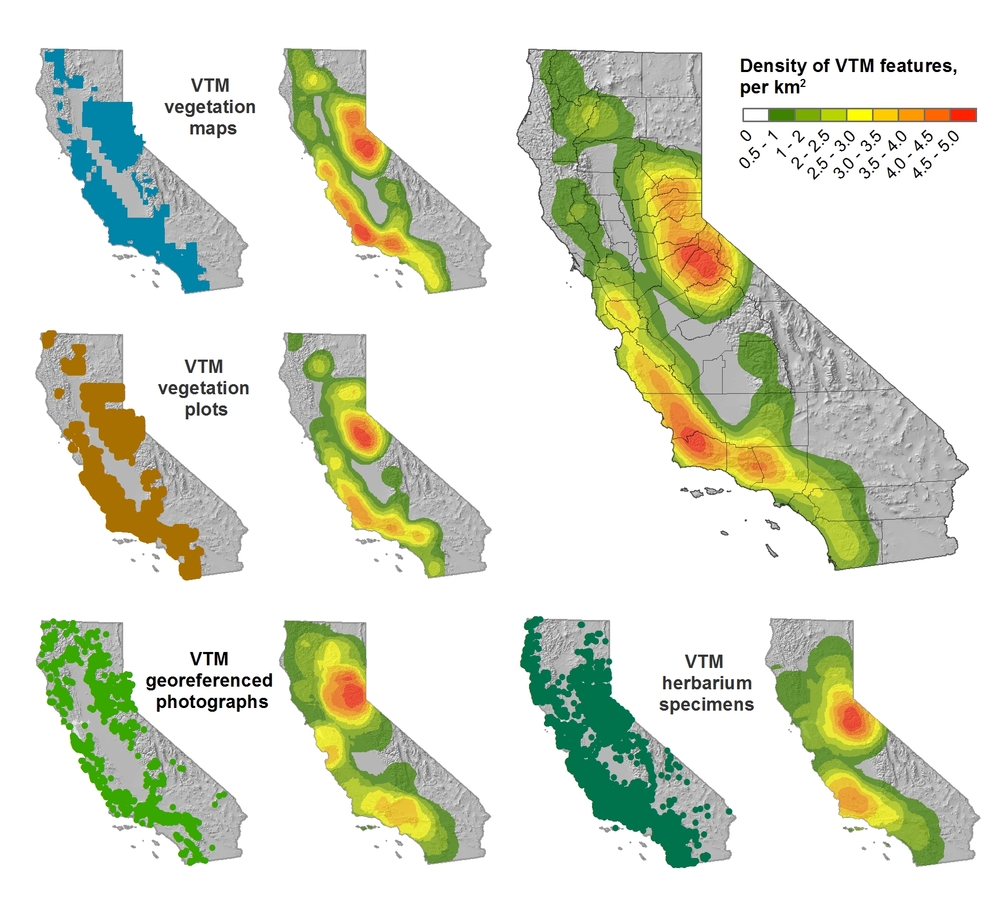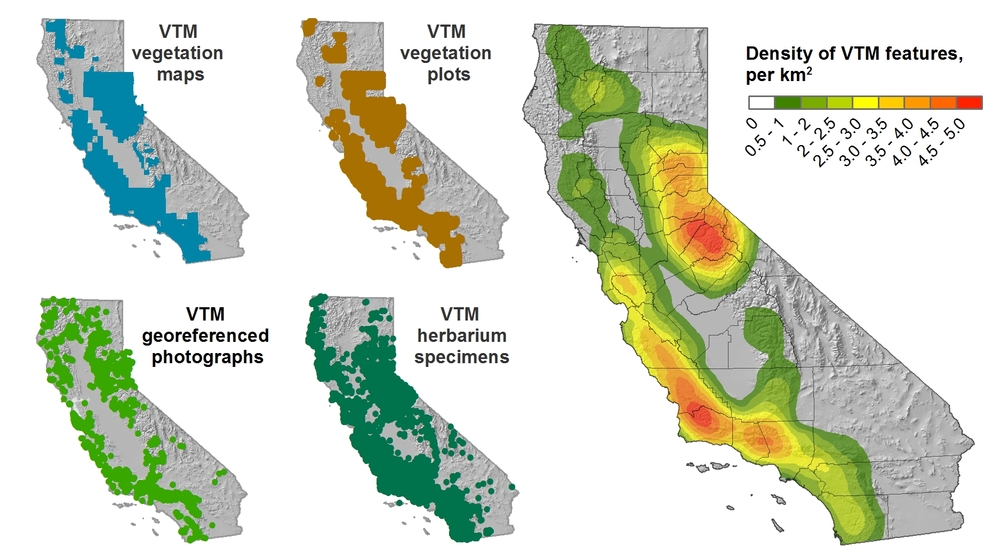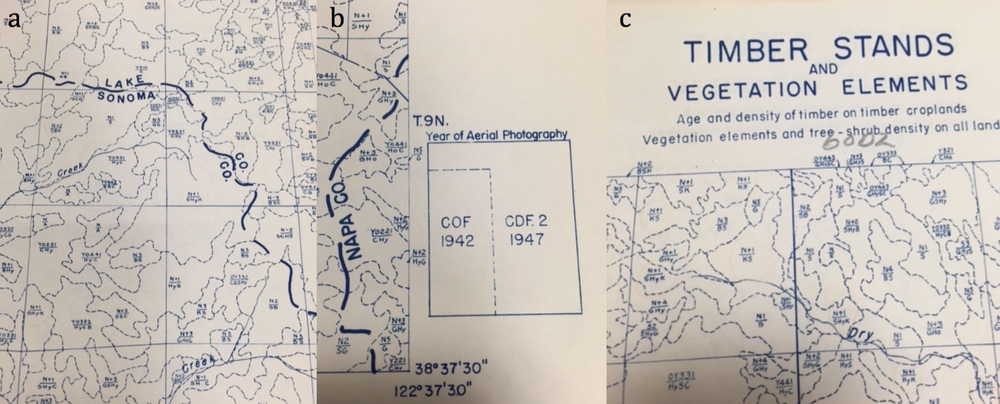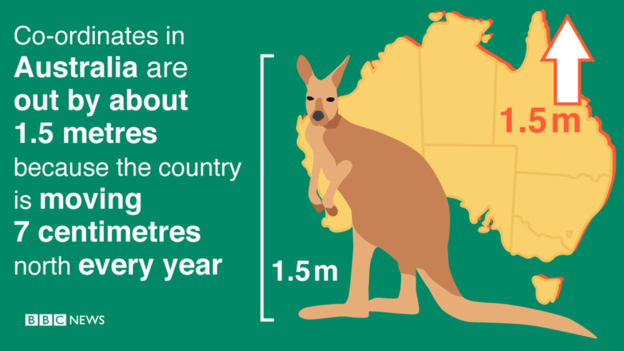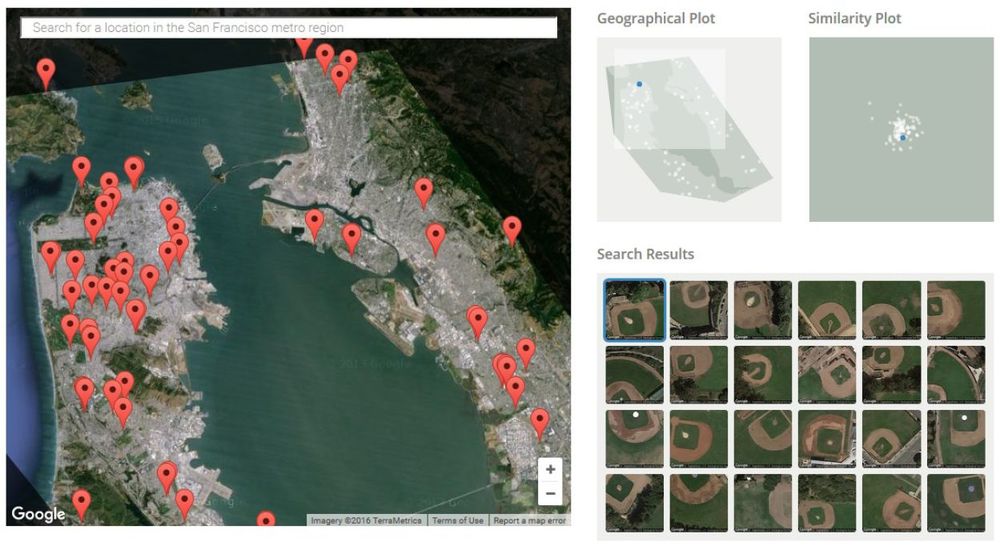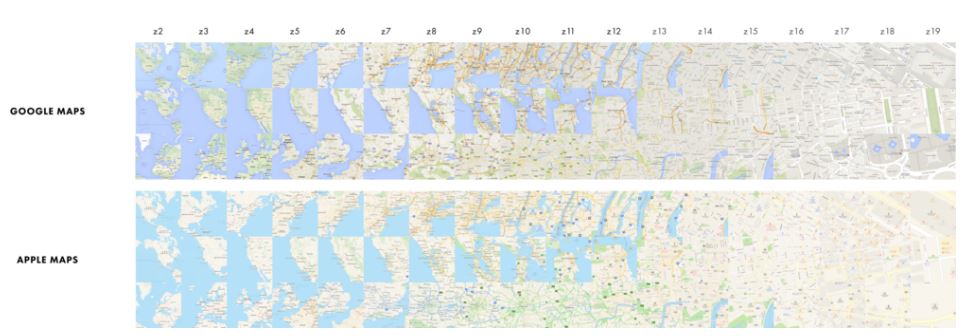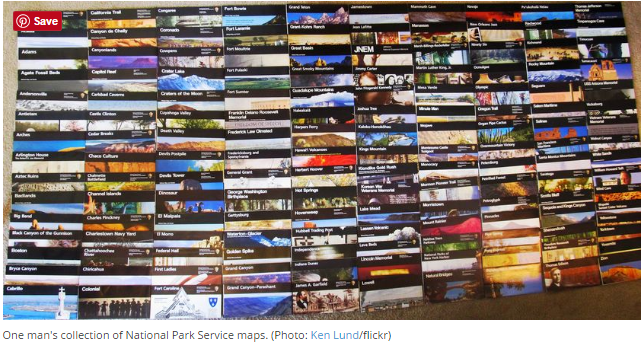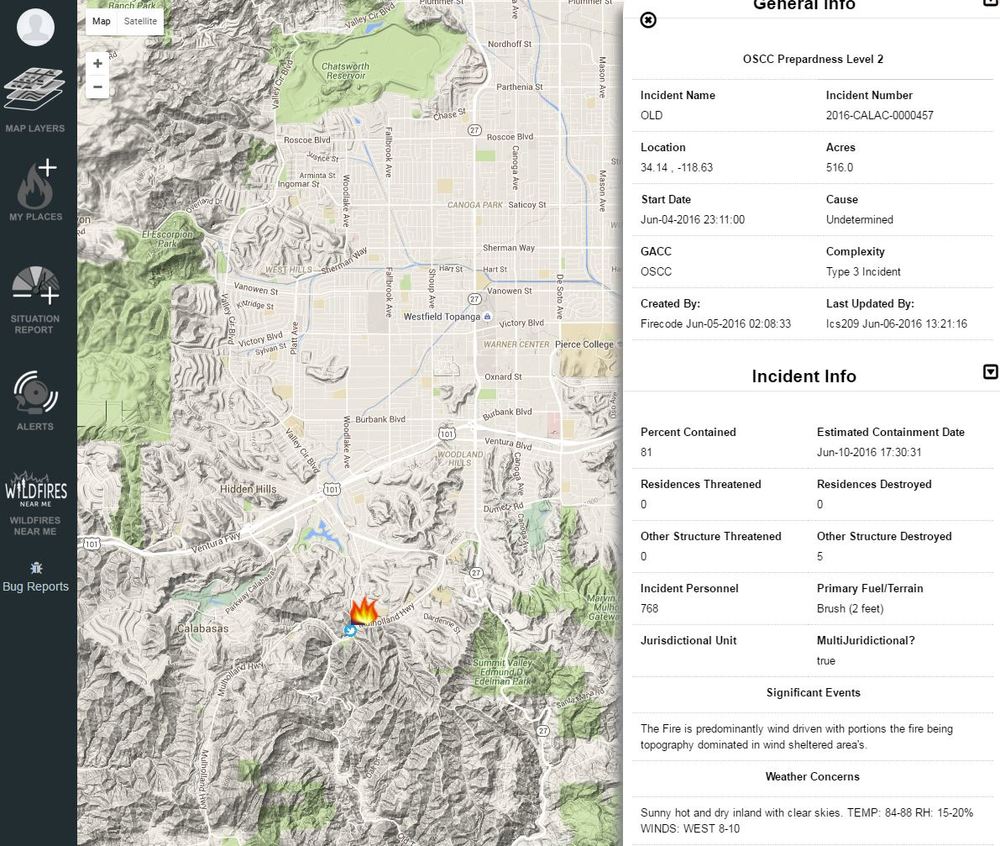Between the years 1949-1979 the Pacific Southwest research station branch of the U.S. Forest service published two series of maps: 1) The Soil-Vegetation Maps, and 2) Timber Stand Vegetation Maps. These maps to our knowledge have not been digitized, and exist in paper form in university library collections, including the UC Berkeley BioScience and Natural Resources Library.
Collection Description
The Soil-Vegetation Maps use blue or black symbols to show the species composition of woody vegetation, series and phases of soil types, and the site-quality class of timber. A separate legend entitled “Legends and Supplemental Information to Accompany Soil-Vegetation Maps of California” allow for the interpretation of these symbols in maps published 1963 or earlier. Maps released following 1963 are usually accompanied by a report including legends, or a set of “Tables”. These maps are published on USGS quadrangles at two scales 1:31,680 and 1:24,000. Each 1:24,000 sheet represents about 36,000 acres. See Figure 1 for the original index key.
The Timber Stand Vegetation Maps use blue or black symbols to show broad vegetation types and the density of woody vegetation, age-size, structure, and density of conifer timber stands and other information about the land and vegetation resources is captured. The accompanying “Legends and Supplemental Information to Accompany Timber Stand-Vegetation Cover Maps of California” allows for interpretation of those symbols. Unlike the Soil-Vegetation Maps a single issue of the legend is sufficient for interpretation. See Figure 2 for the original index key.
Methods
We found 22 quad sheets for Sonoma County in the Koshland BioScience Library at UC Berkeley.
Scanning
Using a large format scanner at UC Berkeley’s Earth Science and Map library we scanned each original quad at a standard 300dpi resolution. The staff at the Earth Science Library completes the scans and provides an online portal with which to download. Current library recharge is at $10 per quad sheet. Coordinating the release of the maps from the UC Berkeley BioScience library and subsequent transfer to the UC Berkeley Earth Science and Map library currently requires a UC member with valid library privileges to check out the maps.
Georeferencing
Georeferencing of the maps was done in ArcGIS Desktop using the georeferencing toolbar. For the Sonoma county quads which are at a standard 1:24,000 scale we were able to employ the use of the USGS 24k quad index file for corner reference points to manually georeference each quad. We used Upper Right, Upper Left, Lower Right, Lower Left as our tie points. The USGS quads are projected in polyconic NAD 1927 UTM Zone 10 projection so we adjusted our data frame to match this original projection and register the image. For a step by step description of this process see “Georeferencing Steps in ArcMap”.
Error estimation
The georeferencing process of historical datasets often produces error. We capture the error created through this process through the root mean squared error (RMSE). The min value from these 22 quads is 4.9, the max value is 15.6 and the mean is 9.9. This information must be captured before the image is registered. See Table 1 below for individual RMSE scores for all 22 quads.
Table 1: Quad original name, quad name from the downloaded USGS 24k file, and the RMSE of the georeferencing process.
Quad Name Quad Name RMSE (m)
60A-3 Whispering Pines 7.48705
60B-3 Asti 12.7461
60B-4 The Geysers 6.84357
60C-1 Jimtown 7.66811
60C-2 Geyserville 6.60752
60C-3 Guerneville 14.8663
60D-12 Mount Saint Helena 10.7671
61A-3 Big Foot Mountain 9.77075
61A-4 Cloverdale 9.37442
61B-3 McGuire Ridge 7.90499
61B-4 Gube Mountain 15.3223
61C-1 Annapolis 5.66674
61C-2 Stewarts Point 14.8612
61C-4 Plantation 4.91229
61D-1 Warm Springs Dam 15.562
61D-2 Tombs Creek 12.995
61D-3 Fort Ross 9.06434
61D-4 Cazadero 13.0045
62A-4 Gualala 11.1405
63A-1 Duncans Mills 7.44373
63A-2 Arched Rock 5.55524
64B-2 Camp Meeker 8.91102





